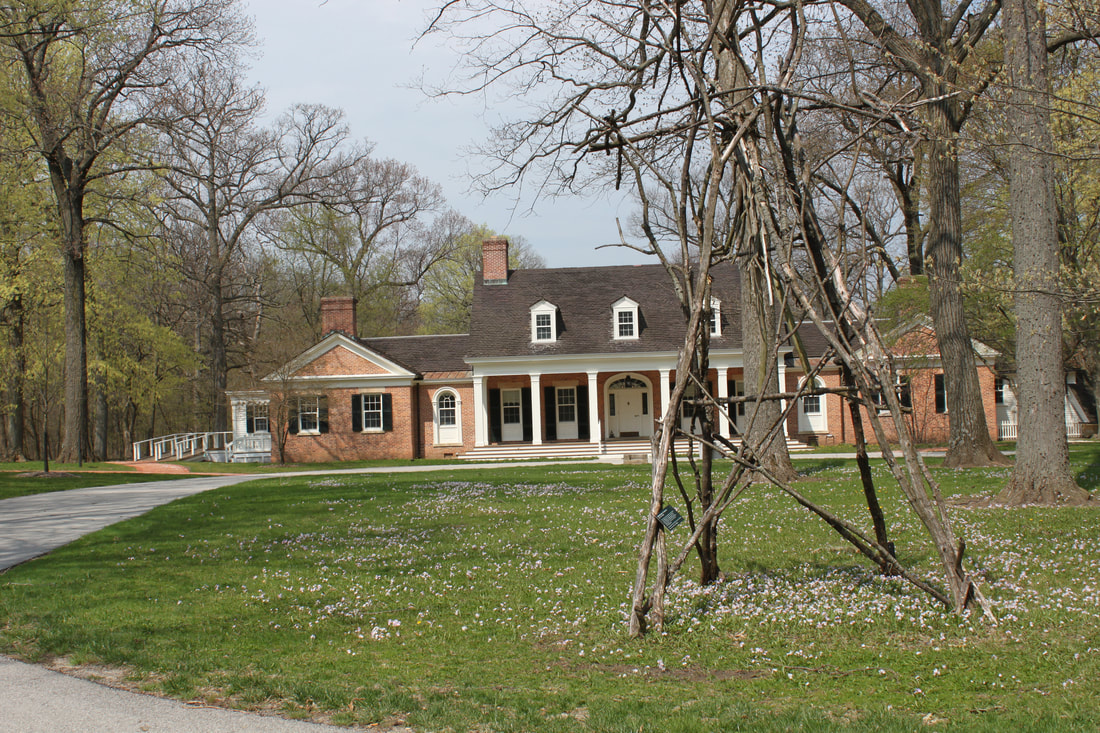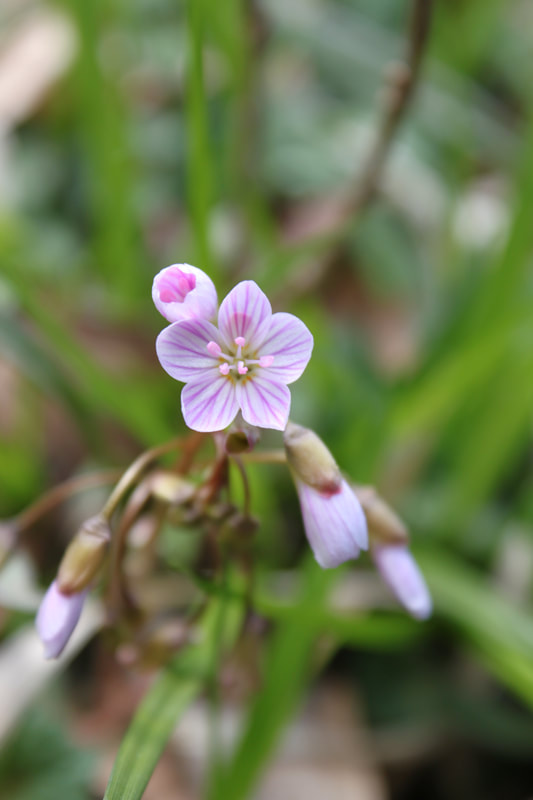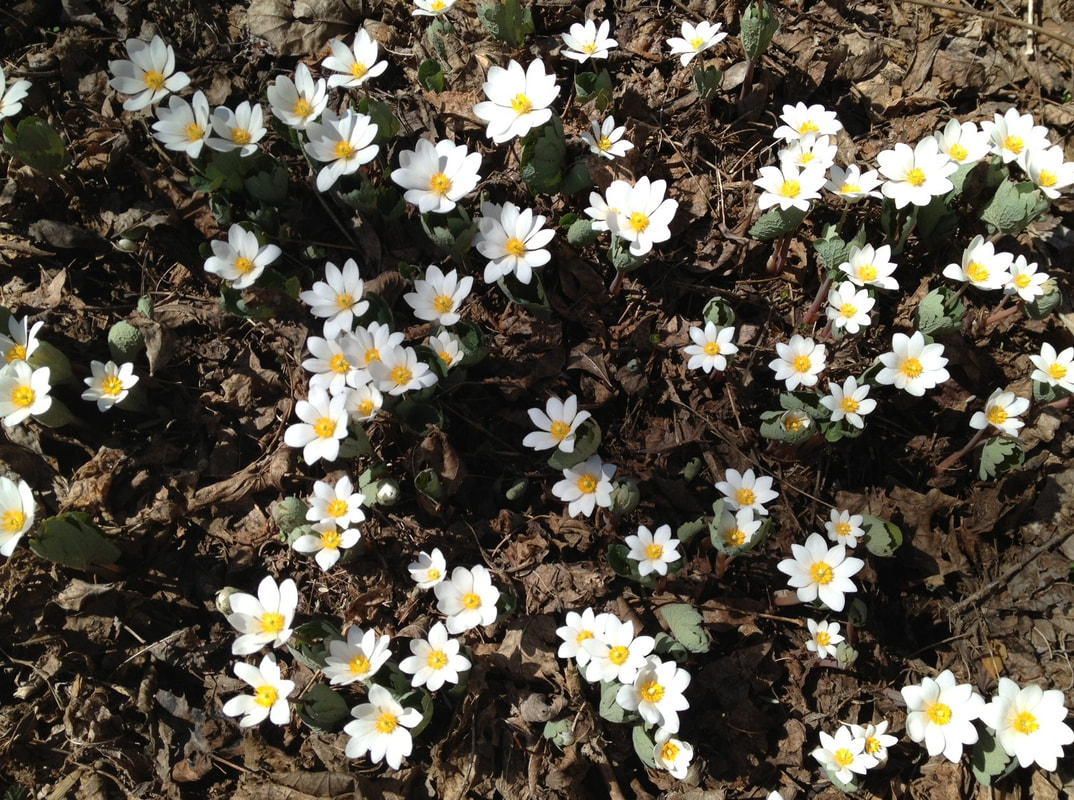|
Although it may seem that winter will never let go of its tight grip, the forests and fields of Lake County are about to bloom with force. Spring is here despite the dusting of snow and below freezing nights. Over the next month, many wildflowers will poke out of the leaf litter and continue their cycle of life. Many of these flowers have very short adult lives, often only living for a brief amount of time. These spring ephemerals are an exciting part of our local ecology, but we are not the first generation to take note of their beauty and usefulness. Native american tribes, as well as the first European settlers, used the flowers both medicinally and spiritually. Although you may recognize the spring beauty or bleeding heart, there is a storied past behind each spring flower.
Perhaps one of the most commonly seen spring flowers is the dandelion (Taraxacum officinale). It is a weed, growing in backyards, along roads and everywhere in between. The flower is actually made of hundreds of florets, each being pollinated during the dandelion’s life. The dandelion has a fascinating history and has been associated with humans as early as 300 BC. Both the Europeans as well as many American Indian tribes, including the Potawatomi and Ojibwa, have used the dandelion for myriad medicinal purposes. The leaves of the plant have diuretic properties and can be used in salads or tea. Native Americans used the plant in order to help ailments such as kidney disease and swelling. Today, specialty winery’s still make dandelion wine from the flowers.
Because the plant secretes this red liquid, it was thought that it could cure blood related illness. The reddish liquid that comes out of the plant, in fact, had many uses by both settlers and Indians. Due to its strong color, it was used for dyes, both in painting one’s body as well as for coloring baskets and decoration. Bloodroot also has many medicinal properties. It was used to stop bleeding, treat the symptoms of fever and cure a sore throat. The Winnebago tribe used Bloodroot as a digestive aid and a way to sooth a toothache. These are just some of the early spring flowers that will be showing up at Ryerson Woods and other local woodlands. Please remember that you cannot extract anything from the woods, so just enjoy the intrinsic beauty of the flowers. Stay tuned for parts 2 and 3, which will feature flowers during the later portion of the bloom. Spring is here, go enjoy it! This blog post was written by Luke Buckardt, who assists Brushwood Center with social media. Luke graduated from Northland College in 2012 with a degree in biology. He grew up in Riverwoods and has roamed Ryerson Woods since he was young, knowing the preserve intimately.
0 Comments
Leave a Reply. |
AuthorThis blog is written by the staff and partners of Brushwood Center at Ryerson Woods Archives
February 2022
Categories |
|
21850 N. Riverwoods Rd.
Riverwoods, IL 60015 224.633.2424 [email protected] ABOUT BRUSHWOOD BECOME A PARTNER VOLUNTEER AND JOB OPPORTUNITIES |
Brushwood Center at Ryerson Woods is committed to enabling the participation and enjoyment of our programming and events for all visitors. At Brushwood Center, you will have open access to accessible parking and entrance to the house, a gender neutral bathroom, and changing tables.
If you require certain accommodations in order to observe or attend our events, or have questions regarding accessibility of our facilities, please contact our Director of Public Programs and Music, Parker Nelson, at [email protected] or at (224) 633-2424 ext. 1. Programming and events at Brushwood Center are available to everyone, including but not limited to age, disability, gender, marital status, national origin, race, religion, and sexual orientation. Site Photography by: In Life Photography, Michael Kardas Photography, Ewa Pasek Photography, Brushwood Staff, and Josiah Shaw Productions |
OPEN TO THE PUBLIC Monday - Thursday & Saturday: 10am - 3pm Sunday: 1pm - 3pm and by appointment |



 RSS Feed
RSS Feed
